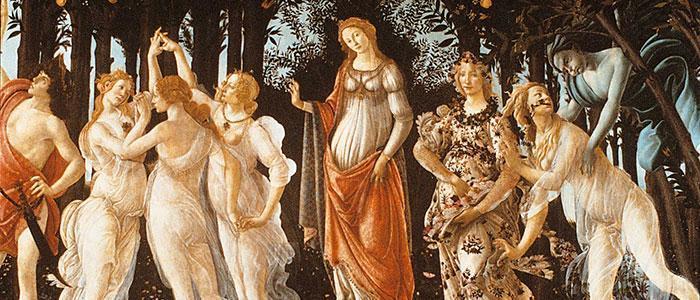
A Level History of Art Tutor
A Level History of Art
A Level History of Art is a step up from previously studied Art. Having an A Level History of Art tutor can really excel your learning and understanding of A-level History of Art.
A Level History of Art is the study of civilisation through consideration of contemporary and historical art and architecture. This qualification fosters a deep social, philosophical, and cultural appreciation of humanity and its need to create. Students develop an understanding of why societies attribute significance to artists, works, and styles, as well as why different societies and epochs diverge in their appraisals. This A Level is a solid choice for any student hoping to pursue the humanities, curation, conservation, or other careers in the art world.

Exam Boards
The main exam board for A Level History of Art is Edexcel. Having some knowledge of exam boards is great information to give to your A Level History of Art tutor. This will help them tailor their lessons with your child, to include relevant syllabus content.
What is A Level History of Art all about?
Though syllabuses vary from year to year, an A Level in History of Art is generally intended to:
- develop a student’s visual analysis and lexis.
- foster thematic analysis of international art and architecture, comparing and contrasting different cultures’ understandings and presentations of a subject.
- encourage in depth research of a specific period in European or American art history.
How an A Level History of Art Tutor will help you do well
The examiner reports for History of Art have consistently noted that the strongest responses to discursive essay questions have a line of argument that runs through the entire length of the response, rather than a discrete verdict or opinion at the end of the essay.
Even if exams are an opportunity to show off what you know, History of Art A Level is no exception to the rule that candidates should write clearly and concisely, rather than exhaustively on a topic. Examiner reports are also often critical of candidates who submit essay answers that appear to have been prepared beforehand and then awkwardly manipulated to fit the terms of the set exam question. Instead, a candidate with the help of their A Level History of Art tutor, should invest time in becoming familiar with prescribed periods, styles, and works. Though contextual knowledge is important for scoring the highest possible mark, it should be used sparingly: nothing in a candidate’s essay should be to the detriment of Answering The Question at hand!
Understand the mark scheme
As a parent, you need to understand how your child’s A Level History of Art exams will be marked. This is so that you know how to help them to obtain the best mark that they can achieve. All the exam boards publish detailed guidance on what they are looking for, including specimen marked answers. The examiner will be giving a specific number of marks for predetermined responses to each question.
Your child needs to know exactly what the examiner wants from them in each style of assessment. They then need to learn how to ‘tick the boxes’ on the mark scheme to ensure they pick up the most marks they can. Learning different exam question styles will be an essential part of your child’s time with their A Level History of Art tutor.
Make a revision plan
It is important that your child allows enough time for revision process. They need to their work properly. You’re A Level History of Art tutor will have a structured revision plan by the January of their exam year.
Quality Revision
Firstly, make sure your child has their notes in order! It is often helpful to check off notes against the requirement of a syllabus as the year goes on. Once you’re both confident that your child has covered and noted the whole syllabus, they can independently start to make revision notes and mind maps based on things such as works, styles, or periods. The skills developed in this re-noting and reformulating are very helpful for planning and writing essays, which is usually best left until towards exam season.
Before exam season however, it is important to liaise with teachers about any material that your child is finding difficult. The more notice you give them before exams, the more likely it is that they’ll be able to make time to offer support and go over tricky topics.
Throughout the academic year and revision period it is also helpful to think about how your child learns best. Do they like the pressure of a memory test or flashcards? Or mapping out key ideas helpful? Maybe they like challenging themselves to write everything they know about a topic on one side of A4? Or talking things over with a parent, sibling, or with their A Level History of Art tutor? Or recording useful or interesting constructions to play back on the bus? Everyone learns and revises differently!

What is different this year?
According to a Department for Education assessment released on 30 September 2021, “exam boards will provide advance information about the focus of the content of the exams for all GCSE, AS and A level subjects… for the summer 2022 exams”. This information will be released by 7 February 2022. If the information is released sooner than 7 February, DfE will give schools and students “at least a week’s notice”.
Sitting Public exams
Even after navigating the demands of GCSEs, students can feel immense pressure around the time of public exams and it is part of your job as a parent to help them navigate this. On a positive note, this can be a time of great personal growth for teenagers, as they specialise in academic interests, sustain hard work over many months and push through exam nerves. Talk to your child about managing their emotions and introduce important elements of self care, such as sufficient sleep and good nutrition.
A Level History of Art Tutor
The best way to support your child through their History of Art A Level is to give them the tools and skills to succeed. Some targeted intervention with an experienced A Leve History of Art tutor can make all the difference. Our A Level History of Art tutors are experienced, qualified teachers, Heads of Department and Examiners who know the A Level History of Art syllabus back to front. They can teach your child in the manner they learn best, explain the latest mark schemes, and dramatically improve their essay technique.